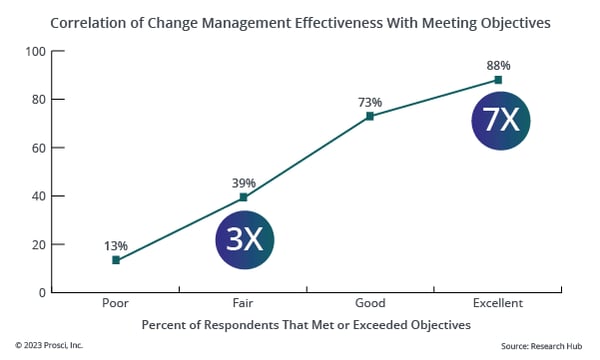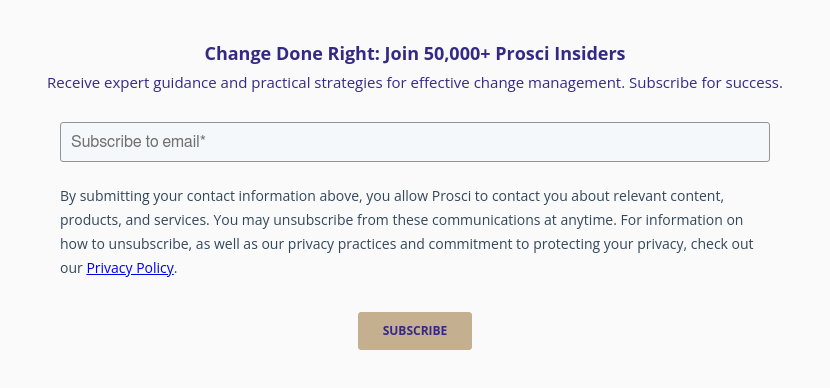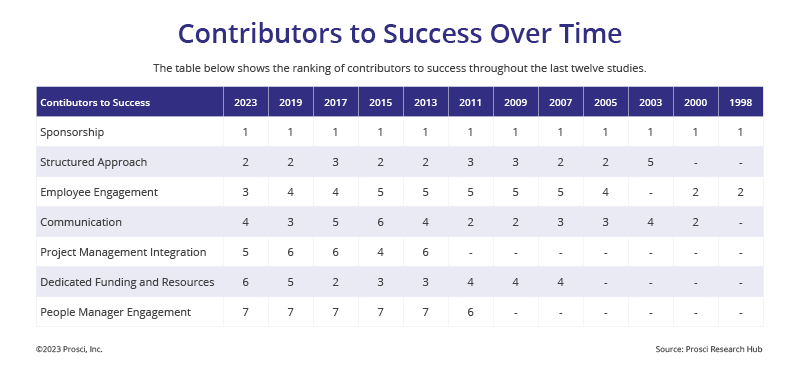You have no items in your shopping cart.
Why Invest in Enterprise Change Capability

4 Mins
Updated: August 7, 2024
Published: October 20, 2021

In my role at Prosci, I have the privilege of working with senior executive teams across different sectors and geographies. Even before the pandemic changed the way we work and live, the dialog had begun shifting to conversations about extraordinary levels of change in their organizations. There has never been a better time to build enterprise change capability and benefit from the investment.
Ever-Present, Accelerating Change
In the years leading up to the pandemic, organizations were already grappling with accelerating rates and increasing volumes of change. I often heard comments like, “We’ve got more change coming in the next three years than we’ve experienced in the last 20," and "Our future depends on the success of the transformation efforts.” Once COVID-19 disrupted our world, such conversations became the norm, except with more urgency.
Some organizations are quickly realizing and acting on the need to ramp up their change management efforts. But when I ask some leaders what approach they use to address the people side of their most important changes, I get a variety of reactions, from blank stares to multiple requests to rephrase the question. The need to establish a robust change capability in organizations still lives in some leaders’ blind spots.
The high price of low user adoption
We all know that value comes not from what gets built, but from what gets used. But I’ve seen multi-million-dollar projects get totally scrapped because of lack of user adoption. And it’s not an isolated issue. I've seen it happen in telecom, healthcare, higher education, utilities, consumer products, travel, insurance, retail and other sectors.
At Prosci, we coach clients that these "glorious belly flops" are only really mistakes if they fail to harvest lessons from them. We’ve been hearing “fail fast and fail forward” for many years, but most big organizations don’t have a culture that supports this kind of thinking. Instead, many companies spend more time on finding who they’ll blame if things don’t work and not nearly enough time ensuring that impacted employees are able to adopt the new change they're trying to make.
On the bright side, the risks and trade-offs associated with not building organizational change capabilities are fast becoming a C-suite discussion topic. One of our multi-billion-dollar global clients even gave us feedback that their board identified change adoption as a top enterprise risk.
The growing demand for change management
I believe organizations are forced to pay for change management whether they know it or not. It’s much easier and more prudent to pay a small dose proactively and with some intention, than to pay a multiplier downstream to clean up a mess. Through the numerous failed changes that organizations have experienced, they are starting to view change management less as an optional, "nice to have if time permits" approach and more of a "must-have step on the critical path to value realization."
We’re seeing leaders grasp the understanding that adoption of new ideas doesn’t happen by accident—and it takes intention and investment to achieve the desired outcomes. It’s getting easier for leaders to make the case that big project budgets need to include a dedicated investment in change management activities. One of my favorite quotes comes from a CFO who said, “We need to start investing at least as much in change management as we are willing to put into contingency budgets.”

Tips for Growing Change Capability
What does it mean to build a change-capable organization? Here are a handful of tips for anyone brave enough to tackle the task of growing organizational change capability.
1. Building organizational change capability requires a sponsor
I’m not talking about a nebulous group of leaders spread across the top of the organization. Instead, I’m talking about a single, named individual with the combination of authority, influence and courage to address the need to improve the benefits realized from organizational changes. Selecting the right primary sponsor makes all the difference in the journey toward building an organizational change capability. This interview with an executive sponsor at Bose explores some of their challenges and opportunities around building change capability.
2. Select your first change initiatives or projects wisely
Many of our clients insist that they need to start with multi-year transformation efforts to demonstrate the effectiveness of a structured change management approach. While these big transformations are often attractive targets, they can pose real challenges. If it takes three years to demonstrate the results change management can deliver, many organizations will have already forgotten about it by the time you get the data. I’d encourage you to look for highly visible projects that provide an opportunity to put wins on the board in the first 100 days of engagement. Read here about how a Danish global transport and logistics company began building change capability with two pilot projects.
3. No senior leadership team is looking for training on change management
It’s essential to engage senior leadership to play the role of sponsors, but if you frame this as a need for change management training, you may be dead on arrival. Instead of positioning training as a key need for senior leaders, I recommend framing change management as nothing more than an accelerator of business outcomes. In lieu of engaging senior executives in a training program, find an opportunity when senior leaders are already meeting virtually or in person and embed a Change Management Sponsor Briefing as a working session focused on accelerating the outcomes of existing projects they're sponsoring.
4. Clarify the role of your leadership
Research consistently shows that sponsors are the number one driver of change success. Research also shows that sponsors need a crisper understanding of their role in times of change. Interestingly, sponsors can have the curse of knowledge when it comes to change details. They hear about, think about, plan for and discuss changes for weeks, months, quarters and even years before the organization hears about it. Worse, sponsors can think that hundreds or thousands of impacted employees will instantly embrace the sponsor’s viewpoint on the heels of a single email announcement.

Building awareness of why change is necessary, championing the change, and demonstrating active and visible support throughout the change are all steps that leaders can take to drive adoption and reinforcement of change. But many don’t have an adequate understanding of what good sponsorship looks like. Watch this on-demand webinar for insights on how to activate your sponsors.
Organizational Change Is Here to Stay
Change is no longer an episodic event, sequenced in a manner that organizations can absorb. Instead, change is a constant that’s here to stay, and the only way for organizations to thrive in times of change is to build a change capability. Senior executives are starting to realize that the ability to out-change the competition is the way to win in competitive markets.
What steps is your organization taking to build a robust change capability?


